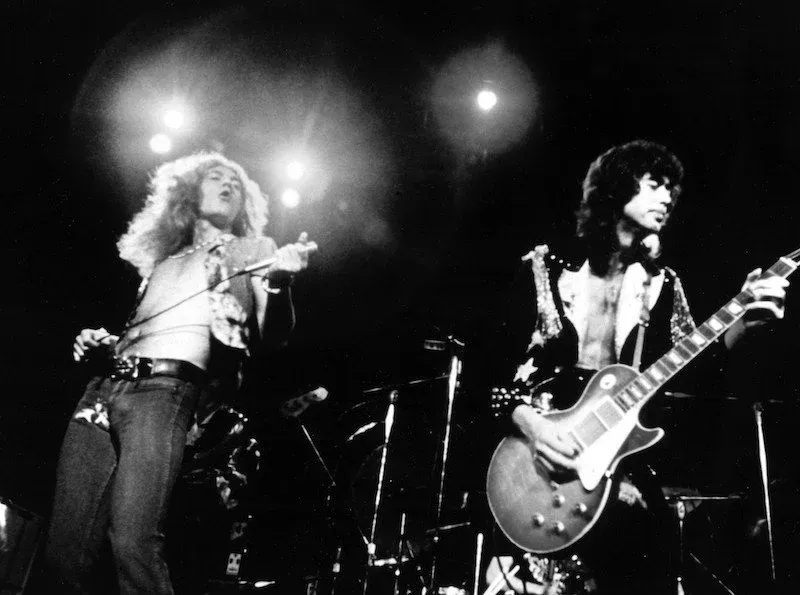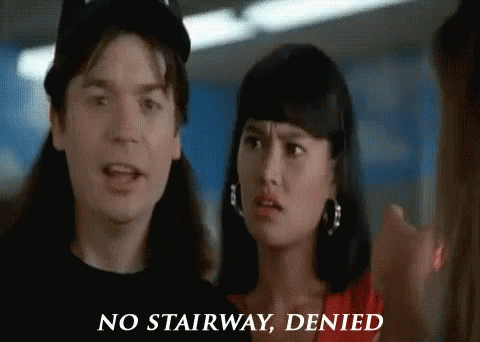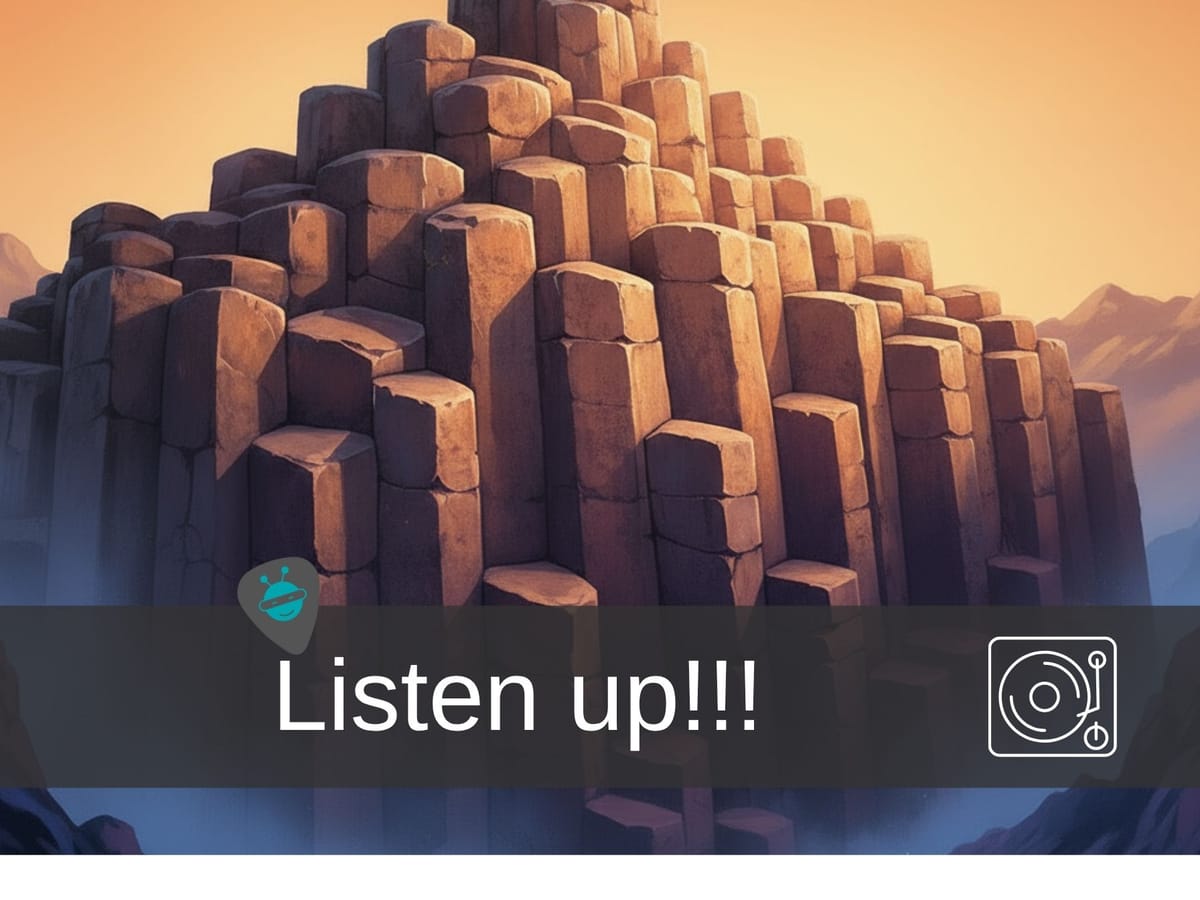"We've done four already, and now we're steady:" Led Zeppelin's first four albums
Led Zeppelin III is my favorite Zeppelin album, with great tracks like Gallows Pole, That's The Way, Out on the Tiles, and Since I've Been Loving You. It's the one I put on when I want to be immersed in classic Zeppelin.

Their first four records are iconic. You can draw a straight line from what guitarist Jimmy Page was doing with Jeff Beck in the Yardbirds to what started to happen with Led Zeppelin. Blues-inspired rock & roll with a heaviness and urgency that hadn't really been reached by other bands of the time.
Throughout those first four albums they also incorporated English folk and American bluegrass, as well as mythical and mystical themes that formed and "completed" the Led Zeppelin sound.
Don't want to read? Get the podcast version of this episode!
That culminated in "Led Zeppelin IV", or "Zoso", or simply "Led Zeppelin," depending on how you want to describe the untitled record. "IV" is seen by the masses to be the pinnacle of Led Zeppelin's power, with tracks like "Black Dog," "Rock and Roll," "When the Levee Breaks," and, of course, "Stairway to Heaven."

The art of experimentation: evolving musical styles
It was the band's fifth album, "Houses of the Holy", that I think marked a significant departure. It's been compared to the evolution of the mid-1960s Beatles in some ways. Both bands built upon their music of the past, yet branched out into new, more expansive musical arenas.
"Houses of the Holy" saw Led Zeppelin trying on various musical styles, such as funk (in "The Crunge"), reggae (in "D'yer Mak'er"), and progressive rock (in "No Quarter"). This experimentation gave the album a more diverse and eclectic sound than any of its predecessors.
Diverse themes and production innovations
Led Zeppelin's earlier albums often dealt with themes such as love, sex, and mysticism. "Houses of the Holy" did as well, but it featured an even broader range of subjects. "The Song Remains the Same" explores the power of music, "The Rain Song" deals with love and longing, and "No Quarter" has a darker, more introspective tone.
The band was always experimental and innovative with their production styles. On "Houses of the Holy," they continued to experiment with studio techniques and effects like layering of guitar and other instruments, phasing, and echo. They also used synthesizers on this album — particularly on "No Quarter."
This experimentation resulted in a richer, more polished, and sophisticated sound.
Front Row members get a bonus monthly newsletter featuring music recommendations and a themed Rock and Roll Reclaimed-curated playlist, plus lots of other great stuff.
Provocative album artwork
Unlike the band's first four albums, which featured minimal or ambiguous designs, "Houses of the Holy" really put itself out there from a visual imagery standpoint.
The band worked with London design house Hipgnosis to create something new, different, evocative, and provocative. Hipgnosis had also created the "pyramid and prism" album cover for 1973's "The Dark Side of the Moon" as well as much of Pink Floyd's early artwork. They went on to create art for many bands throughout the 1970s.
The "Houses of the Holy" album cover depicts a provocative image of naked, golden-haired children crawling and climbing up the rocks of Giant's Causeway in Northern Ireland.

It was, and remains, a controversial album cover designed to grab attention. The first four Zeppelin albums, from my point of view, were designed to let the music do all the work. They were boring by comparison. With "Houses of the Holy," the cover artwork did more of the work in leading listeners to the band's evolved and artistic sound and style.
Pushing boundaries
Perhaps these changes were a result of the band getting bored with the heavy blues-based rock music that they were known for. Perhaps it was their desire to push new boundaries and take risks. I suspect it was a combination. "Houses of the Holy" stands as a testament to the band's artistic growth and their ability to broaden their sounds and styles, while still maintaining their unique identity.
No matter how far they pushed, Plant's soulful vocals were still mesmerizing. Page's guitar work was soulful, bluesy, and a little sloppy (in the best way). John Bonham's driving, booming, heavy percussion was as important to the band's sound as Page and Plant's.
John Paul Jones is the guy that people seem to forget about. His inventive bass lines were iconic and integral to the sound of Led Zeppelin. He built a pocket and a groove with Bonham that set the foundation for the Zeppelin sound.
Those things — the fundamentals of the Zeppelin sound — didn't change, even when their music evolved. With the benefit of 50 years of hindsight, we now see "The Rain Song", "No Quarter", and "The Ocean" in the same light as we see "Good Times Bad Times", "Stairway to Heaven", and "Whole Lotta Love."
So what lessons can we take from Led Zeppelin's creative evolution in "Houses of the Holy" and apply to the stuff we make? Let's explore.
The song remains the same: lessons in storytelling and creativity
"Houses of the Holy" showcases the band's musical evolution, incorporating a variety of styles such as funk, reggae, and progressive rock. but it still kept their signature hard rock and blues sound.
As creators and storytellers, we can take risks. We can push the envelope. We can try new things, as long as they're rooted in our fundamentals. Your fundamentals may vary depending on the medium you're working in. For me as a marketer and creator, they might be something like this:
- Brand
- Point of view
- Audience
- Expertise
- Story
- Influence
Think of two professional basketball players who pull off a magnificent no-look pass. They can only do that because of the groundwork of fundamentals – the language of basketball – that both players have ingrained into them over years of hard work and practice.
A new, familiar journey
Led Zeppelin stretched boundaries and took risks within the boundaries of their signature sound, but they could only do that because of the vast groundwork that encompassed their experience, their influences, and their core sound developed over time.
Take your audience on a new, but familiar journey. Opening them up to new ideas is most successful when rooted in something that's familiar, useful, or comfortable.
Experimenting with new genres or in new mediums within the content we create can lead to audience growth and development. Finding nuance within those parameters can allow you to create something truly creative and special.
Embracing influence and inspiration
Led Zeppelin didn't create "Houses of the Holy" in a vacuum. New and interesting music from Zeppelin's peers was coming out in the early 1970s that influenced the band's sound. Pink Floyd is an example. The progressive music of Genesis, Yes, and King Crimson is another. Reggae music and Bob Marley also had a profound impact.
Influence and inspiration is important as it helps us to find better ways of communicating with and growing our existing audience. Inspiration helps us avoid stagnancy. In some cases, it helps us to get started and serves as a foundation for finding our own voice and point of view. Don't be afraid to get inspired by others.
Emotional connection is key to storytelling
There's an emotional connection found in the music on "Houses of the Holy" that's somewhat different from what we hear on the earlier Zeppelin albums. Many of the songs on the album evoke strong emotions, such as the longing in "The Rain Song" or the uplifting spirit of "Dancing Days." "Houses of the Holy" takes us on a journey that's different than the others up to that point.
Emotion is vital to great storytelling and audience experience. If done well, it can foster deeper engagement, loyalty, and advocacy.
Has anybody seen the bridge? Creating in the age of generative AI
We're now in the middle of a technological revolution in the form of generative AI. How do we deal with making new stuff in this era? Do we leave AI out? Do we turn over the keys and let ChatGPT do the driving?
To answer this, let's look to "Houses of the Holy." When Zeppelin incorporated reggae into "D'yer Mak'er," they didn't suddenly become a reggae band. When they added funk to "The Crunge," Page didn't stop being Page. They took these new influences and ran them through the Zeppelin filter - Plant's voice, Bonham's thunderous drums, Page's guitar wizardry, and Jones's rock-solid foundation.
I believe that's how we should approach AI in creativity – as a powerful new creative device that should expand your palette, but never replace your creative core.
Think about your creative fundamentals – your perspective, your experiences, your way of seeing the world. These are things AI can't replicate because they're uniquely yours. Use AI to help you explore new formats, generate initial concepts, or handle the technical grunt work. But filter it all through your own creative lens.
I used AI to look this post over before I published it, and it found a number of things that simply didn't work or didn't make sense, so I changed them in my own way.
Zeppelin could experiment with different genres because they had mastered their fundamentals first. They knew who they were as artists. If you don't have that foundation - if you haven't developed your own voice, perspective, and creative instincts – then AI becomes a crutch instead of a tool.
Creators who rely on AI without developing their own foundation will produce content that's technically competent but creatively hollow. That's the slop that we all hear about.
AI should be considered a raw material to be shaped by your unique creative vision, not as a substitute for having one. The moment you let AI become your voice instead of enhancing it, you've lost what makes you unique.
Dancing days are here again: creative inspiration
Great stuff is created by embracing change, creativity, inspiration, and emotional connection. If you're a creator or storyteller you can use the "Houses of the Holy" blueprint as influence for expanding your creative horizons.
If you're not a Zephead, find your favorite album that might similarly push boundaries. There are countless others (look to The Beatles, David Bowie, Jeff Beck, The Beastie Boys, Beyoncé - and that's just the B's) as your influence create engaging and memorable things that break ground, stretch boundaries, and resonate with your audience in new and exciting ways.







